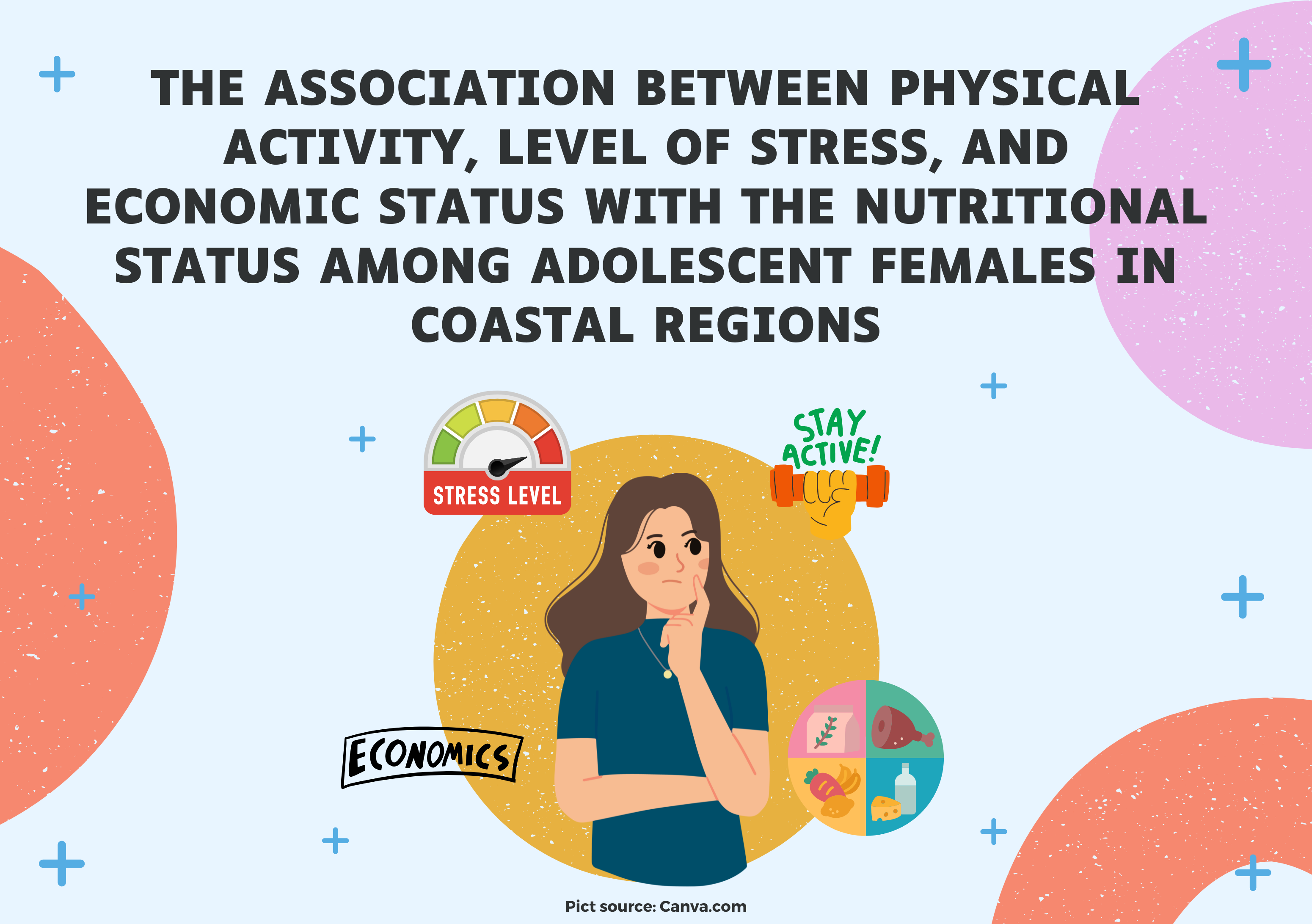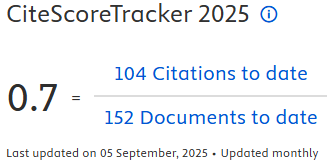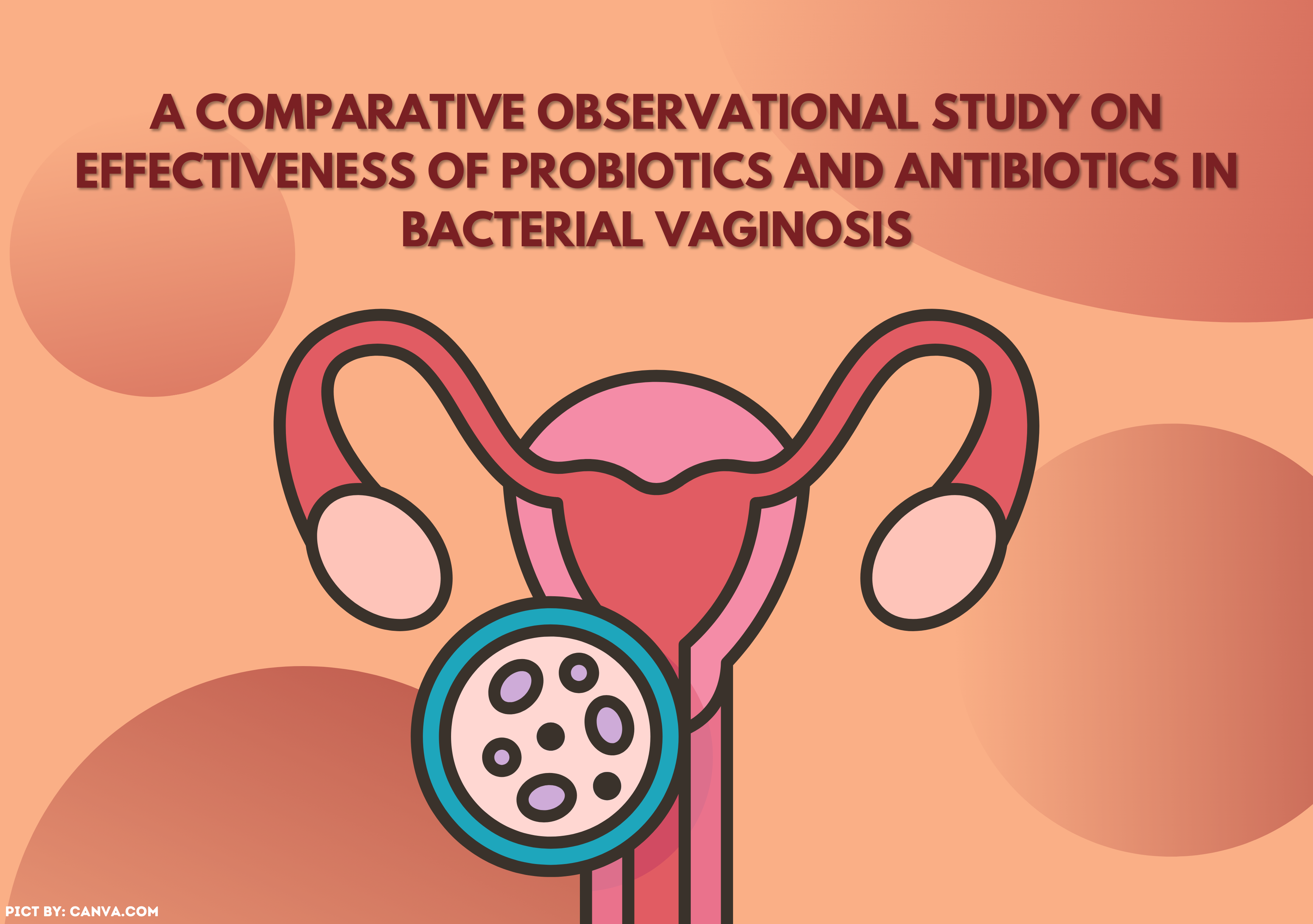THE ASSOCIATION BETWEEN PHYSICAL ACTIVITY, LEVEL OF STRESS, AND ECONOMIC STATUS WITH THE NUTRITIONAL STATUS AMONG ADOLESCENT FEMALES IN COASTAL REGIONS

Downloads
Introduction: Adolescent girls belong to a population that is particularly susceptible to dietary deficiencies. The nutritional issues experienced by adolescents significantly affect the well-being of both present and future generations, as well as the overall economic and health of the nation. Various factors have been found related to nutritional issues and have a significant impact on the well-being of adolescent girls by approximately 28.4%. Aims: The purpose of this study is to determine the relationship between physical activity status, levels of stress and economic status with the nutritional status of adolescent girls in coastal regions. Methods: This study employs an analytical observational research design using a cross-sectional method. The independent factors consist of physical activity, level of stress, and economic position, whereas the dependent variable pertains to nutritional status as measured by BMI. The study included a sample of 176 adolescent girls residing in the coastal region. The participants were chosen using the stratified random sampling method. Results: Research showed that 109 (61.9%) respondents had good nutritional status, 40 (22.7%) were undernourished and 27 (15.3%) were over nourished. Based on statistical tests, p-physical activity (p=0.000), level of stress (p=0.000), and economic status (p=0.000) were obtained. Conclusions: Physical activity, level of stress, and economic status have a relationship with the nutritional status of adolescent girls in the coastal regions.
Agisna, F., Kartika, I., Aulia, R., Maulana, R., Anggisna, S., & Nasution, A. S. (2022). Aktivitas Fisik Dapat Menentukan Status Gizi Mahasiswa. Contagion: Scientific Periodical Journal of Public Health and Coastal Health, 4(1), 26-34. https://doi.org/10.30829/contagion.v4i1.11777
Al-amer, R., Dwekat, E., Ali, A., Abuzied, Y., Alzahrani, N. S., Alhowaymel, F. M., Alharbi, H. F., Lapadula, S., AlBashtawy, M., Hussein, M. M., & Randall, S. (2024). Prevalence of stress and types of coping strategies among adolescents (14–18 years) in collectivist communities. Journal of Pediatric Nursing, 77, e290-e297. https://doi.org/https://doi.org/10.1016/j.pedn.2024.04.043
Amin, N., Ovita, A. N., & Hatmanti, N. M. (2019). Hubungan body image dan aktivitas fisik dengan status gizi remaja putri kelas VIII SMPN 20 Surabaya. Sport and Nutrition Journal, 1(1), 27-32. https://doi.org/10.15294/spnj.v1i1.31276
Aulianti, T., & Puspitasari, R. (2021). Hubungan antara tingkat stres dan akitivitas fisik dengan status gizi pada usia remaja di Tangerang. Alauddin Scientific Journal of Nursing, 2(1), 24-31. https://doi.org/10.24252/asjn.v1i2.20311
Aziz, L. I. (2022). Hubungan Status Ekonomi, Pengetahuan, dan Pola Makan dengan Status Gizi pada Balita di Posyandu Pepaya Desa Citapen Tahun 2021. Jurnal Interprofesi Kesehatan Indonesia, 2(1), 220-227. https://doi.org/10.53801/jipki.v2i1.46
Baja, F. R., & Rismayanthi, C. (2019). Hubungan Tingkat Pengetahuan Diet Dan Aktivitas Fisik Terhadap Status Gizi Pada Siswa Sekolah Menengah Atas. MEDIKORA: Jurnal Ilmiah Kesehatan Olahraga, 18(1), 1-6. https://doi.org/10.21831/medikora.v18i1.29189
Basic Health Research. (2018). 2018 National Riskesdas report Jakarta:.Health Research and Development Agency2.
Bintanah, S. (2023). Buku Digital-Gizi Pada Ibu Hamil.
Bitty, F., Asrifuddin, A., & Nelwan, J. E. (2019). Stres dengan status gizi remaja di sekolah menengah pertama negeri 2 manado. Kesmas, 7(5).
Central Bureau of Statistics. (2022). Jumlah penduduk menurut umur dan jenis kelamin di provinsi sulawesi tenggara.
Coelho, L. G., Cândido, A. P. C., Machado-Coelho, G. L., & Freitas, S. N. d. (2012). Association between nutritional status, food habits and physical activity level in schoolchildren. Jornal de Pediatria, 88, 406-412. https://doi.org/10.2223/JPED.2211
Dungga, E. F., Ibrahim, S. A., & Suleman, I. (2022). The relationship of parents'education and employment with the nutritional status of the child. Jambura Journal of Health Sciences and Research, 4(3), 991-998. https://doi.org/10.35971/jjhsr.v4i3.16589
Fitriyani, L. (2023). Hubungan tingkat stres dengan status gizi mahasiswa tingkat akhir s1 fakultas ilmu keperawatan unissula. Universitas Islam Sultan Agung Semarang
Hsu, T., & Raposa, E. B. (2021). Effects of stress on eating behaviours in adolescents: A daily diary investigation. Psychology & Health, 36(2), 236-251. https://doi.org/10.1080/08870446.2020.1766041
Jakaria, M., Bakshi, R. K., & Hasan, M. M. (2022). Is maternal employment detrimental to children’s nutritional status? Evidence from Bangladesh. Review of Development Economics, 26(1), 85-111. https://doi.org/10.1111/rode.12819
Kamaruddin, M., & Sari, N. A. (2019). Persepsi dan pengetahuan mahasiswa akademi kebidanan tahirah al baeti terhadap gizi remaja. Medika Alkhairaat: Jurnal Penelitian Kedokteran dan Kesehatan, 1(3), 114-118. https://doi.org/10.31970/ma.v1i3.41
Khoerunisa, D., & Istianah, I. (2021). Hubungan asupan zat gizi makro dan aktivitas fisik dengan status gizi pada remaja: The Relationship Of Macro Nutritional Intake And Physical Activity With Nutritional Status In Adolescents. Jurnal Pangan Kesehatan Dan Gizi Universitas Binawan, 2(1), 51-61. https://doi.org/10.54771/jakagi.v2i1.236
Kitagawa, Y., Ando, S., Yamasaki, S., Foo, J. C., Okazaki, Y., Shimodera, S., Nishida, A., Togo, F., & Sasaki, T. (2017). Appetite loss as a potential predictor of suicidal ideation and self-harm in adolescents: A school-based study. Appetite, 111, 7-11. https://doi.org/10.1016/j.appet.2016.12.026
Kusnan, A., & Susanty, S. (2022). Improvement of Clean and Healthy Living Behavior in Coastal Communities in Bajo Indah Village, Soropia District Konawe District. Mattawang: Jurnal Pengabdian Masyarakat, 3(1), 36-41. https://doi.org/10.35877/454RI.mattawang807
Lalusu, E. A. F. S., Handriyati, A., & Zaifullah, A. (2020). Hubungan antara tingkat pendidikan ibu, waktu pertama kali pemberian mp-asi, dan status ekonomi dengan kejadian gizi kurang pada balita di puskesmas mamboro tahun 2018. Medika Alkhairaat: Jurnal Penelitian Kedokteran dan Kesehatan, 2(1), 7-12. https://doi.org/10.31970/ma.v2i1.44
Lim, M. C., Parsons, S., Goglio, A., & Fox, E. (2021). Anxiety, stress, and binge eating tendencies in adolescence: a prospective approach. Journal of Eating Disorders, 9(1), 94. https://doi.org/10.1186/s40337-021-00444-2
Mak, K.-K., Ho, S.-Y., Lo, W.-S., McManus, A. M., & Lam, T.-H. (2011). Prevalence of exercise and non-exercise physical activity in Chinese adolescents. International Journal of Behavioral Nutrition and Physical Activity, 8, 1-4. https://doi.org/10.1186/1479-5868-8-3
Mardiyah, S., Wandini, K., & Dwiyana, P. (2024). The Relationship Between Stress, Emotional Eating, and Nutritional Status in Adolescents. Jurnal Gizi dan Dietetik Indonesia (Indonesian Journal of Nutrition and Dietetics), 12(4). https://doi.org/10.21927/ijnd.2024.12(4).252-261
Masyudi, M., Mulyana, M., & Rafsanjani, T. (2019). Dampak pola asuh dan usia penyapihan terhadap status gizi balita indeks BB/U. AcTion: Aceh Nutrition Journal, 4(2), 111-116. https://doi.org/10.30867/action.v4i2.174
McKenzie, K., Murray, G. C., Prior, S., & Stark, L. (2011). An evaluation of a school counselling service with direct links to Child and Adolescent Mental Health (CAMH) services. British Journal of Guidance & Counselling, 39(1), 67-82. https://doi.org/10.1080/03069885.2010.531384
Mojtabai, R., & Olfson, M. (2020). National trends in mental health care for US adolescents. JAMA Psychiatry, 77(7), 703-714. https://doi.org/10.1001/jamapsychiatry.2020.0279
Muzdalifah, I. (2021). Hubungan Stres Dengan Status Gizi Pada Santriwati Pondok Pesantren Nurul Hakim PPKH-KMMI Lombok Barat Fakultas Kedokteran UIN Syarif Hidayatullah Jakarta].
Nader, P. R., Bradley, R. H., Houts, R. M., McRitchie, S. L., & O’Brien, M. (2008). Moderate-to-vigorous physical activity from ages 9 to 15 years. Jama, 300(3), 295-305. https://doi.org/10.1001/jama.300.3.295
Naomi, S. (2020, 2020/12/12). Descriptive Study of Adolescent Depression in Covid-19 Pandemic. Proceedings of the 2nd Tarumanagara International Conference on the Applications of Social Sciences and Humanities (TICASH 2020),
Novitasari, M., & Kumala, M. (2022). Hubungan Stres Dengan Status Gizi Pada Mahasiswa Universitas Tarumanagara. Ebers Papyrus, 28(2), 23-30. https://doi.org/10.24912/ep.v28i2.20886
Oktarindasarira, Z. (2020). Hubungan Pengetahuan, Pekerjaan Ibu Dan Pendapatan Keluarga Dengan Status Gizi Balita Di Wilayah Kerja Puskesmas Tapin Utara Tahun 2020. Universitas Islam Kalimantan MAB.
Putri, P. H., Wulandari, C., Sa’bania Hari Raharjeng, D. S., Linda, A., Mutiarani, M. I., Rohmah, C. F., Safitri, A. N., & Ika, V. D. (2024). Overweight in school-age children and its risk factors. The Indonesian Journal of Public Health, 19(1). https://doi.org/10.20473/ijph.v19i1.2024.132-142
Rumende, M., Kapantow, N. H., & Punuh, M. I. (2018). Hubungan Antara Status Sosial Ekonomi Dengan Status Gizi Pada Anak Usia 24-59 Bulan di Kecamatan Tombatu Uatara Kabupaten Minahasa Tenggara. Kesmas, 7(4).
Sampouw, N. L. (2021). Hubungan Antara Status Sosial Ekonomi Dengan Status Gizi Balita Di Kelurahan Buha Kecamatan Mapanget Kota Manado. Klabat Journal of Nursing, 3(1), 21-27. https://doi.org/10.37771/kjn.v3i1.532
Słowik, J., Grochowska-Niedworok, E., Maciejewska-Paszek, I., Kardas, M., Niewiadomska, E., Szostak-Trybuś, M., Palka-Słowik, M., & Irzyniec, T. (2019). Nutritional status assessment in children and adolescents with various levels of physical activity in aspect of obesity. Obesity Facts, 12(5), 554-563. https://doi.org/10.1159/000502698
Supardi, N., & Fitrianingsih, J. (2023). Edukasi Tentang Gizi Seimbang Bagi Remaja Dalam Upaya Peningkatan Pengetahuan Mengenai Kebutuhan Gizi Di Wilayah Kerja Puskesmas Somba Opu. Pandawa: Pusat Publikasi Hasil Pengabdian Masyarakat, 1(3), 216-222. https://doi.org/10.61132/pandawa.v1i2.178
Taklual, W., Baye, S., Mekie, M., & Andualem, T. (2020). Double burden of malnutrition among female adolescent students in Bahir Dar City, Amhara, Ethiopia. BioMed Research International, 2020(1), 6249524. https://doi.org/10.1155/2020/6249524
UNICEF. (2023a). Adolescent health dashboards.
UNICEF. (2023b). Child Malnutrition.
Wandani, Z. S. A., Sulistyowati, E., & Indria, D. M. (2021). Pengaruh Status Pendidikan, Ekonomi, dan Pola Asuh Orang Tua Terhadap Status Gizi Anak Balita di Kecamatan Pujon Kabupaten Malang. Jurnal Kedokteran Komunitas (Journal of Community Medicine), 9(1).
Widiastuti, A., & Widiyaningsih, E. (2023). Relationship Physical Activity With Nutritional Status Of High School In Surakarta. Prosiding 16thUrecol: Seri MIPAdan Kesehatan, pp. 66-74.
Wijaya-Erhardt, M. (2019). Nutritional status of Indonesian children in low-income households with fathers that smoke. Osong Public Health and Research Perspectives, 10(2), 64. https://doi.org/10.24171/j.phrp.2019.10.2.04
Witte, M. A., Weber, C. H., Lebow, J., LeMahieu, A., Geske, J., Witte, N., Whiteside, S., Loth, K., & Sim, L. (2023). Lifetime prevalence of psychiatric disorders in adolescents with unexplained weight loss, underweight, or poor appetite. Journal of Developmental & Behavioral Pediatrics, 44(4), e277-e283. https://doi.org/10.1097/DBP.0000000000001173
Yudisthira, A., Damrah, D., Ihsan, N., Yenes, R., & Khairoh, J. (2023). Evaluation of Mastery of Pedagogic Competence of Physical Education, Sports and Health (PJOK). Kinestetik: Jurnal Ilmiah Pendidikan Jasmani, 7(4), 940-951. https://doi.org/10.33369/jk.v7i4.29766
Copyright (c) 2025 The Indonesian Journal of Public Health

This work is licensed under a Creative Commons Attribution-NonCommercial-ShareAlike 4.0 International License.
- The authors agree to transfer the transfer copyright of the article to The Indonesian Journal of Public Health effective if and when the paper is accepted for publication.
- Authors and other parties are bound to the Creative Commons Attribution-NonCommercial-ShareAlike 4.0 International License for the published articles, legal formal aspect of journal publication accessibility refers to Creative Commons Attribution-NonCommercial-ShareAlike 4.0 International License (CC BY-NC-SA), implies that:
- Attribution ” You must give appropriate credit, provide a link to the license, and indicate if changes were made. You may do so in any reasonable manner, but not in any way that suggests the licensor endorses you or your use.
- NonCommercial ” You may not use the material for commercial purposes.
- ShareAlike ” If you remix, transform, or build upon the material, you must distribute your contributions under the same license as the original.































